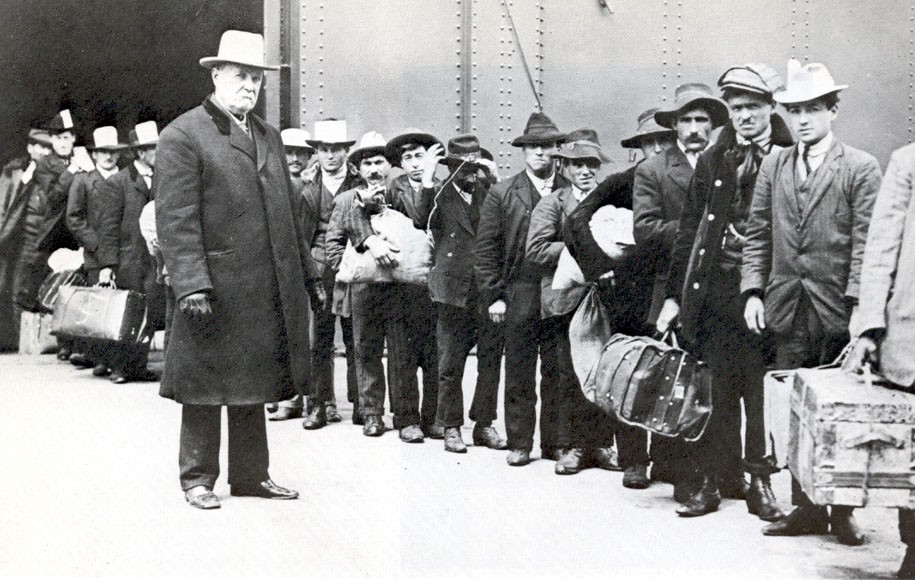Can someone please translate this death record. Thank you.
I'm very interested in knowing about where she lived, her parent's info and any other personal data.
http://dl.antenati.san.beniculturali.it ... ewsIndex=0
1870 death of Maria Migliarese
-
GLiguori77
- Newbie

- Posts: 24
- Joined: 01 Dec 2019, 18:50
Re: 1870 death of Maria Migliarese
Record # 41 of 22 June 1870
Death record of Maria Felice Migliarese, 3 years old, born and died in Grottamiranda, daughter of Francesco, flebotomo* and Teresa Adinolfi, peasant
_____
*this is the Italian word in the record. I’m not sure if this is a phlebotomist or a blood-letter.
Death record of Maria Felice Migliarese, 3 years old, born and died in Grottamiranda, daughter of Francesco, flebotomo* and Teresa Adinolfi, peasant
_____
*this is the Italian word in the record. I’m not sure if this is a phlebotomist or a blood-letter.
Re: 1870 death of Maria Migliarese
Hi
Thank you. He was a phlebotomist but his grandfather was a bloodletter, after being a barber for a time.
Thank you. He was a phlebotomist but his grandfather was a bloodletter, after being a barber for a time.
-
AngelaGrace56
- Master

- Posts: 7468
- Joined: 16 Oct 2012, 10:54
Re: 1870 death of Maria Migliarese
So what is the difference? I thought they were the same, i.e. a bloodletter and a phlebotomist.carolc wrote: 21 Feb 2020, 00:23 Hi
Thank you. He was a phlebotomist but his grandfather was a bloodletter, after being a barber for a time.
Angela
Re: 1870 death of Maria Migliarese
My understanding of it is that Francesco's grandfather - Raffaele - (who was born in mid 1700s) practiced a medieval form of medical treatment in which the patient had a certain amount of blood drained because it was believed that illness came from a misbalance of the body humours and so to remove some I suppose kind of balanced things out.
Whereas his grandson, the phlebotomist worked in more "modern" times and withdrew a sample of blood for testing.
Whereas his grandson, the phlebotomist worked in more "modern" times and withdrew a sample of blood for testing.
Re: 1870 death of Maria Migliarese
AngelaGrace, I did some checking and your hunch was right. Bloodletting was done via phlebotomy. I don't know why Italian records use two different words for the profession but it is all the same. The grandsons likely were not drawing blood for testing but for the same reason as their ancestors, a misguided way to treat patients by removing blood. I was curious why some records list one relative's profession as a barber and then in another that same person is a phlebotomist. This might answer that question:
https://www.ncbi.nlm.nih.gov/pubmed/24995453
Bloodletting was a practice favoured by doctors and barber-surgeons for many centuries, and is now, perhaps surprisingly, still employed for a few specific indications. The effectiveness of bloodletting for treating diseases such as pneumonia was convincingly challenged in the mid-nineteenth century, but medical conservatism ensured the practice continued well into the twentieth century. As late as 1942, a famous medical textbook considered bloodletting appropriate treatment for pneumonia.
https://www.ncbi.nlm.nih.gov/pubmed/24995453
Bloodletting was a practice favoured by doctors and barber-surgeons for many centuries, and is now, perhaps surprisingly, still employed for a few specific indications. The effectiveness of bloodletting for treating diseases such as pneumonia was convincingly challenged in the mid-nineteenth century, but medical conservatism ensured the practice continued well into the twentieth century. As late as 1942, a famous medical textbook considered bloodletting appropriate treatment for pneumonia.
-
AngelaGrace56
- Master

- Posts: 7468
- Joined: 16 Oct 2012, 10:54
Re: 1870 death of Maria Migliarese
carolc wrote: 22 Feb 2020, 14:02 AngelaGrace, I did some checking and your hunch was right. Bloodletting was done via phlebotomy. I don't know why Italian records use two different words for the profession but it is all the same. The grandsons likely were not drawing blood for testing but for the same reason as their ancestors, a misguided way to treat patients by removing blood. I was curious why some records list one relative's profession as a barber and then in another that same person is a phlebotomist. This might answer that question:
https://www.ncbi.nlm.nih.gov/pubmed/24995453
Bloodletting was a practice favoured by doctors and barber-surgeons for many centuries, and is now, perhaps surprisingly, still employed for a few specific indications. The effectiveness of bloodletting for treating diseases such as pneumonia was convincingly challenged in the mid-nineteenth century, but medical conservatism ensured the practice continued well into the twentieth century. As late as 1942, a famous medical textbook considered bloodletting appropriate treatment for pneumonia.
Angela
Re: 1870 death of Maria Migliarese
Yes, barbers did draw blood, and (though that might seem rude and unhygienic nowadays) used leeches to do it.
Giuseppe "Pippo" Moccaldi
Certificate requests and genealogical researches in Italy.
Translation of your (old) documents and letters.
Legal assistance in Italy for your Italian citizenship.
Certificate requests and genealogical researches in Italy.
Translation of your (old) documents and letters.
Legal assistance in Italy for your Italian citizenship.



